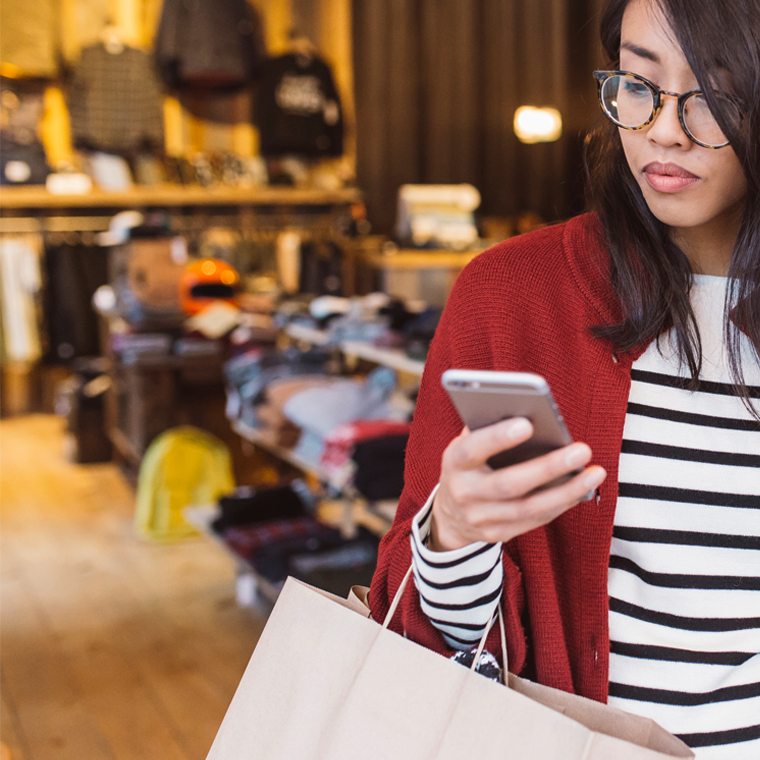Brands spend the lion’s share of their budgets where they know their audiences can be found: Facebook and Google.
That’s why these two companies account for 80 percent of all digital ad spend (including mobile).
But as augmented reality (AR), virtual reality (VR) and a combination of the two known in the industry as mixed reality (MR) become more sophisticated and tested, they have the potential to create a whole new platform, ecosystem and media that will easily challenge today’s dominant parties.
The Power of MR
Moreover, MR has the potential to replace all screens. Like scenes out of “Minority Report,” it’s not too much of a stretch to envision a world where we can conjure up content and engage with it using gestures.
For instance, imagine Google Maps layered on top of the real street you’re walking down, and using it for real-time navigation.
Rather than consumers existing in a pure AR or VR world, MR will offer the ability to add elements to our real world on demand. This may sound purely Sci-Fi, but it’s closer to reality than you may realize.
Adding Visual Overlays
We’ve already seen how mundane daily activities—such as shopping in a supermarket—can be enhanced with visual overlays that bring new dimensions to the experience. Rather than selecting tomatoes from a bin, consumers can pick them off the vine while on the farm where they were grown.
CPG companies can use such overlays to show — rather than state — how their products are all natural, green or comforting to babies by inserting consumers into the places where their products originate.
Such experiences will become mainstream once the wearable technology is small enough and powerful enough to sit inside typical glasses lenses.
Tech Meets Real Life
Then there are applications like Pokémon GO, Snapchat’s Face Swap Lens and Microsoft’s Windows Holographic, a program that allows PC users to interact with 3-D images all around them.
Pokémon GO is proof-positive that humans will integrate technology with real-life behaviors, providing a glimpse of what our future will ultimately look like.
Snapchat’s Face Swap Lens allows consumers to swap their faces with their friends, pets or anything that has a face. Snapchat warned it would be creepy, and Buzzfeed absolutely agreed. Why is it so unnerving? Because it’s so realistic.
Straddling 2 Places at Once
ARHT Media, a startup out of Canada, has introduced something it calls HumaGrams. These are extremely realistic holograms of humans that deliver immersive 3-D interactive experiences.
The company’s goal is to allow people, such as CEOs, to be in two places at once via “holo-porting.” Rather than get on a plane headed for the Far East to address an employee meeting, the CEO’s 3-D hologram delivers a presentation and even takes questions from the audience.
Both ARHT’s HumaGrams and Pokémon GO are examples of MR, offering virtual objects that people can interact with as if they’re real. Both blend reality and illusion; they don’t take people out of this world, they simply add elements to the real world.
Advertising in This New World
Smart brands are already thinking about how to make their messaging work, and how to engage their consumers inside these new worlds. For example, McDonald’s converted its Japanese restaurants into Pokémon gyms to take advantage of the Pokémon GO craze.
If consumers opt to exist in an MR world, then brands must follow. We’ve seen this play out as consumers migrated from print to digital, from desktop to mobile, and from mobile to wearables.
Make no mistake: MR has already arrived on the scene, and as we saw with Pokémon GO, has been fully embraced by consumers.
But what’s important to call out is the speed at which these opportunities come and go. Overnight, Pokémon Go captured the attention of the world, people traveling to new places just to “catch ’em all.” And just as fast as it emerged, the craze subsided.
Timing Is Everything
MR will be a boon to marketers, who will have an array of far more subtle and clever targeting opportunities at their disposal, but they’ll need to capitalize as soon as the moment arises.
When combined with a rich history of a consumer’s interests and location, and the ability to personalize, MR will present absolutely astounding ways to deliver contextually and personally-relevant messaging.
MR brings new rules and challenges, of course.
Ad placements may be akin to sponsorship deals in order to deliver more immersive advertising experiences. That means the impression-based models marketers are accustomed to may no longer be relevant, forcing the industry to develop new pricing models.
And as with all things digital, there is a potential privacy minefield we’ll need to address. Copyright infringements can also be an issue as ads bleed onto walls, buildings, cars, and so on, with existing logos. All of these scenarios will need to be played out and resolved.
MR is not some distant future — it’s just around the corner. Start thinking about how your brand can leverage this exciting innovation, so you have a strategy for engaging your customers in this new mixed-reality world.
The original article can be found here.
 Share on LinkedIn
Share on LinkedIn Share on X
Share on X


